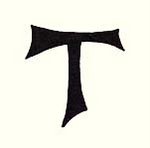









Some wish to live within the sound of church and chapel bells.
I want to run a rescue shop within a yard of hell.C.T. Studd

Just by the very nature of our birth, we are on the spiritual journey.
The oldest of human striving is to be at one with our fellow human beings

A life is either all spiritual or not spiritual at all. No man can serve two masters. Your life is shaped by the end you live for. You are made in the image of what you desire.
While you are proclaiming peace with your lips, be careful to have it even more fully in your heart.

Once Jesus was asked to support of the death penalty.
He replied, "Let he who is without sin cast the first stone".
Mennonite Poster
If we have no peace, it is because we have forgotten that we belong to each other.
God created all things...
elastic waistbands
are my favorite!
The best way to find yourself is to lose yourself in the service of others.

If you have men who will exclude any of God's creatures from the shelter of compassion and pity, you will have men who will deal likewise with their fellow men.
St. Francis of Assisi

If I speak in the tongues of men and of angels, but have not love, I am only a resounding gong or a clanging cymbal. If I have the gift of prophecy and can fathom all mysteries and all knowledge, and if I have a faith that can move mountains, but have not love, I am nothing. If I give all I possess to the poor and surrender my body to the flames, but have not love, I gain nothing.
Love is patient, love is kind. It does not envy, it does not boast, it is not proud. It is not rude, it is not self-seeking, it is not easily angered, it keeps no record of wrongs. Love does not delight in evil but rejoices with the truth. It always protects, always trusts, always hopes, always perseveres...


“Your task is not to seek for love, but merely to seek and find all the barriers within yourself that you have built against it.”
You shall love the Lord your God with all your heart, and with all your soul, and with all your mind.' "This is the great and foremost commandment. "

Jimmy Carter

"If you are a theologian, you pray truly; and if you pray truly, you are a theologian"

“Those who have a 'why' to live, can bear with almost any "how.'”
Viktor Frankl
We have been called to heal the wounds,to unite what part has fallen apart,and to bring home those who have lost their way.
St. Fancis of Assisi
Be kind whenever possible. It is always possible.
We know that every moment is a moment of grace, every hour an offering; not to share them would mean to betray them. Our lives no longer belong to us alone; they belong to all those who need us desperately."
Elie Wiesel
A family is a place where minds come in contact with one another.
If the minds love one another
The home will be as a beautiful as a flower garden.
But if these minds get out of harmony with each other
It is like a storm which plays havoc
With the garden.
The Buddha


































